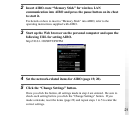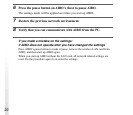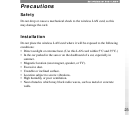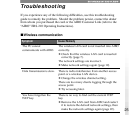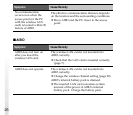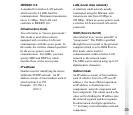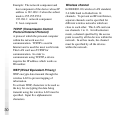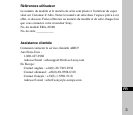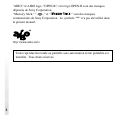
28
Glossary
Access point
A networking device with both wireless
communication interface and telephone
line or Ethernet interface, which bridges
across the wireless LAN and wired LAN.
For wireless communication, SSID,
wireless channels to be used, and WEP
key must be specified for the access
point.
Ad hoc demo mode
A transmission method for devices
equipped with a wireless LAN card (for
example, a PC and AIBO), which does
not require the access point. In ad hoc
demo mode, you must specify wireless
channel and WEP key for both AIBO and
a personal computer. When you select
ad hoc demo mode, you cannot specify
SSID.
DHCP (Dynamic Host
Configuration Protocol) server
When you construct a network using
TCP/IP, an IP address must be specified
for all the devices within the network.
When a DHCP server is included within
the network, it assigns an IP address
automatically for all devices. The access
point or Windows NT/2000 server can
serve as the DHCP server.
IBSS (Independent Basic Service
Set) Peer-to-Peer mode
When you set at least one PC within the
wireless LAN network to IBSS Peer-to-
Peer mode, all devices within the
network can communicate with each
other without an access point. The only
difference between IBSS Peer-to-Peer
mode and ad hoc demo mode is that
SSID can be specified for the IBSS Peer-
to-Peer mode while it cannot be specified
for the ad hoc demo mode. When there
is no access point within the network, at
least one personal computer must be set
to IBBS Peer-to-Peer mode and the rest
of the personal computer and the wired
LAN devices must be set to infrastructure
mode.




